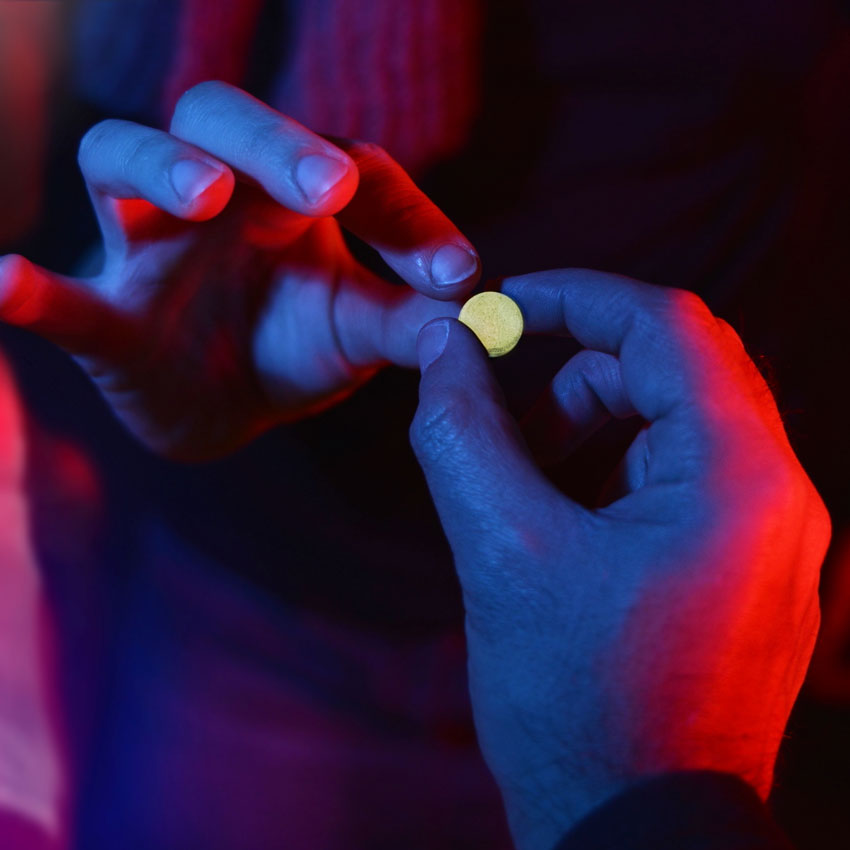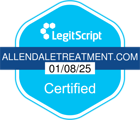Unveiling the Fog: Exploring the Rise of New Psychoactive Substances and the Shadowy Dangers Within
Unveiling the Fog: Exploring the Rise of New Psychoactive Substances and the Shadowy Dangers Within
The war on drugs, once waged primarily against natural substances like marijuana and cocaine, is facing a formidable new enemy: a constantly evolving legion of synthetic concoctions known as new psychoactive substances (NPS). These enigmatic chemicals, often marketed under innocuous names like “Molly” and “Kratom,” bypass existing drug regulations, leaving a trail of uncertainty and concern in their wake. Their allure lies in their ability to mimic the effects of familiar drugs like MDMA and opioids, but at a fraction of the legal cost. However, lurking beneath the surface of their recreational appeal are unknown risks and unpredictable effects, painting a worrying picture for public health and safety.
Updated: 2024
Written by: Allendale Treatment
If you or anyone you know are struggling with addiction, call (833) 338-6946 to speak with a professional.
Molly (MDMA Analogs): A False Face of Ecstasy
One of the most notorious NPS is Molly, often touted as a purer form of MDMA, the key ingredient in Ecstasy. While it may resemble its predecessor in chemical structure, the devil lies in the details. Unlike MDMA, Molly often contains a cocktail of synthetic chemicals, each with its own unpredictable set of effects. These additives can range from amphetamines to piperazines, capable of inducing anxiety, paranoia, hyperthermia, and even seizures.

A prime example is PMMA, a Molly adulterant with a chilling resemblance to MDMA in appearance but a vastly different impact. Ingesting PMMA can lead to severe organ damage, even death, highlighting the treacherous gamble users take when opting for these unregulated substances. The unpredictability of Molly’s composition makes it impossible to predict its effects, turning every dose into a potentially toxic roll of the dice.
Kratom: From Traditional Tonic to Modern Misuse
Kratom, a plant native to Southeast Asia, has a long history in traditional medicine for pain relief and fatigue reduction. However, its recent surge in popularity in the US has raised eyebrows due to its potential for addiction and dependence. While Kratom’s active components, mitragynine and 7-hydroxymitragynine, share some properties with opioids, their exact mechanisms of action remain shrouded in mystery.
Studies suggest that at low doses, Kratom can act as a stimulant, while higher doses produce opioid-like effects, including pain relief, sedation, and euphoria. However, the unregulated nature of Kratom makes it difficult to control dosage and purity, leading to potential overdoses and unpredictable side effects like hallucinations, respiratory depression, and even psychosis.
A Web of Uncertainty: The Elusive Nature of NPS Research
The biggest challenge in understanding the true dangers of NPS lies in their constant evolution. Unlike established drugs, NPS lack extensive research due to their rapid emergence and clandestine nature. This creates a dangerous knowledge gap, leaving users, healthcare professionals, and policymakers groping in the dark.
Chemical modifications that tweak molecular structures can produce vastly different effects, making it difficult to predict how each new iteration of an NPS will behave. This constant game of cat and mouse with clandestine chemists leaves researchers struggling to keep pace, rendering accurate risk assessments and effective treatment protocols elusive.

A Glimmer of Hope: Collaborative Efforts to Untangle the NPS Maze
Despite the daunting challenges, the fight against NPS is not without hope. Collaborative efforts between researchers, law enforcement, and public health agencies are crucial in shedding light on this enigmatic realm. Initiatives like the National Institute on Drug Abuse’s (NIDA) Early Warning System and the European Monitoring Centre for Drugs and Drug Addiction (EMCDDA) provide real-time data on emerging NPS trends, helping to track their spread and potential harms.
Furthermore, advancements in analytical tools and technology are accelerating the identification and characterization of novel NPS. Mass spectrometry and other sophisticated techniques are allowing researchers to rapidly decipher the chemical makeup of these substances, paving the way for more targeted risk assessments and potential treatment options.

A Glimmer of Hope: Collaborative Efforts to Untangle the NPS Maze
Despite the daunting challenges, the fight against NPS is not without hope. Collaborative efforts between researchers, law enforcement, and public health agencies are crucial in shedding light on this enigmatic realm. Initiatives like the National Institute on Drug Abuse’s (NIDA) Early Warning System and the European Monitoring Centre for Drugs and Drug Addiction (EMCDDA) provide real-time data on emerging NPS trends, helping to track their spread and potential harms.
Furthermore, advancements in analytical tools and technology are accelerating the identification and characterization of novel NPS. Mass spectrometry and other sophisticated techniques are allowing researchers to rapidly decipher the chemical makeup of these substances, paving the way for more targeted risk assessments and potential treatment options.
Navigating the Fog: Empowering Users and Communities
While research and law enforcement play crucial roles, the ultimate responsibility lies with potential users and their communities. Open and honest conversations about the dangers of NPS, coupled with comprehensive drug education programs, can help demystify the allure of these unregulated substances and empower individuals to make informed choices.
Building resilient communities that address underlying issues like poverty, mental health, and social isolation can create a supportive environment where individuals struggling with addiction are more likely to seek help. Additionally, promoting harm reduction strategies, such as making naloxone readily available for opioid overdoses, can mitigate the worst consequences of NPS use.
Embracing Harm Reduction
While confronting the unknown nature of NPS can feel daunting, we are not powerless. Harm reduction strategies offer a crucial shield against the immediate dangers these substances pose. Imagine a safety net woven from readily available drug testing kits, safe consumption spaces, and overdose prevention medications like naloxone. These tools empower individuals to make informed choices and minimize the risks associated with NPS use.
Drug testing kits, for example, allow users to identify potentially harmful adulterants within NPS, enabling them to make informed decisions about whether to ingest the substance. Safe consumption spaces provide a controlled environment where individuals can use drugs under the supervision of trained professionals, reducing the risk of overdose and other complications. Additionally, widespread access to naloxone, a medication that can reverse opioid overdoses, can be a life-saving intervention in instances of accidental or intentional NPS poisoning.
These harm reduction strategies operate under the fundamental principle of respect for human dignity and autonomy. They recognize that simply abstinence may not be a realistic or attainable goal for everyone struggling with NPS use. Instead, harm reduction offers a spectrum of options, acknowledging the complexities of addiction while aiming to minimize the individual and societal harms associated with it.
By integrating harm reduction into our approach to the NPS challenge, we can foster a more compassionate and effective response. This empowers individuals to navigate the fog of uncertainty with greater safety, while simultaneously gathering valuable data to inform future research and prevention efforts. Remember, harm reduction is not condoning or encouraging drug use; it is simply recognizing the reality of a complex issue and striving to minimize its negative consequences. It’s a powerful shield against the darkness, offering a glimmer of hope in the face of the unknown.
If you or anyone you know are struggling with addiction, call (833) 338-6946 to speak with a professional.


